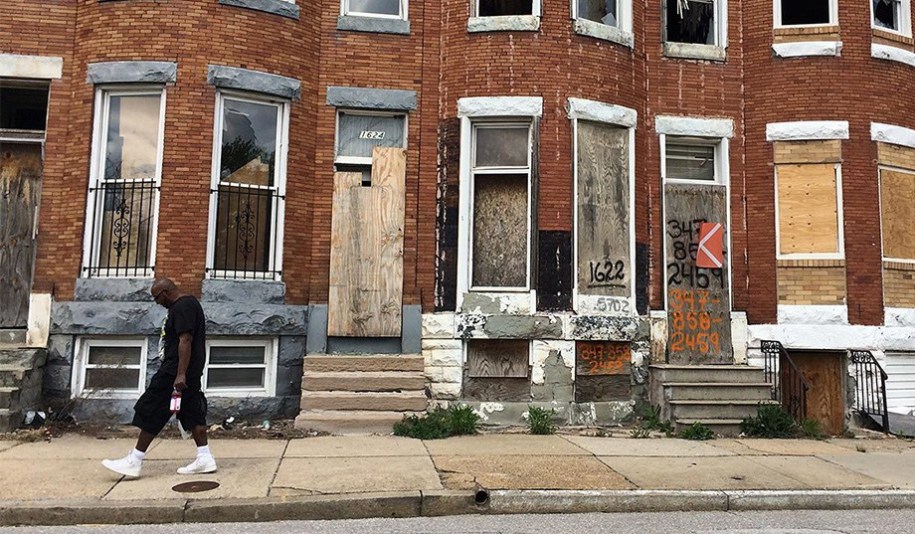
Want to renew Baltimore? Then reform its tax structure
Originally published in the Daily Record
Wes Moore is living the American Dream. From humble beginnings – his father died when he was four and his mother moved the family in with her parents – he’s achieved success as a student, soldier, author, investment banker, and CEO of a major charity.
This inspiring story of upward mobility doubtless informs his promise that “work, wages and wealth will be the north stars” of his administration. This is not mere alliteration, but wisdom. Countless social problems have their roots in lack of economic opportunity. Especially in Baltimore – once Maryland’s economic engine but now its neediest jurisdiction – it’ll be impossible to make much headway against crime, poverty, and inequality unless the city’s economy is transformed.
Promising to “create good jobs” is a staple of political rhetoric, of course, but a key and overlooked way most Americans build wealth – especially poor and minority families – is through another element of the American Dream: home ownership and the steady accumulation of equity. And the governor-elect’s own experiences in this regard show how Baltimore’s misguided tax policy damages the economic prospects of its residents and businesses, diminishes their wealth, and limits opportunity.
Wes and Dawn Moore paid $2.35 million for a dream home in Baltimore’s Guilford neighborhood in February of 2017. Zillow now estimates it to be worth $2.48 million. Maryland's Department of Assessments and Taxation is less optimistic, valuing the property at $2.24 million.
Even if we buy the higher “Zestimate,” it would represent just a 5.5% increase over a period when the CPI has risen 22.2%. Nationwide, home prices have risen an average of 56.2% since February ’17, per the Case-Shiller 20-city index. By both metrics, the Moores have taken a bath.
Some might ask why we should care whether millionaires like the Moores become wealthier still. That misses the point: if investing in Baltimore’s best neighborhoods is a losing proposition, then it’s surely even less desirable elsewhere in the city. If investments large and small can deliver ten times the yield outside Baltimore City, then that’s where capital will flow – and people and jobs will follow.
So it’s crucial to understand why this is happening – and fix it. Clearly, high crime and poor schools adversely affect property values and repel investment. A good deal of the incoming administration’s time and energy doubtless will be devoted to ameliorating these problems.
But even if we waved a magic wand and made Baltimore’s streets as safe and its schools as good as all other jurisdictions in the state, the city would still suffer the consequences of disinvestment and flight. The culprit is Baltimore’s high tax rates on real and personal property – i.e., on capital and investment – and the relentless arithmetic of “tax capitalization.”
Suppose the Moores – upon moving to the governor’s mansion in Annapolis – try to sell their Baltimore home for the Zestimate. Their buyers would face an annual property tax bill of over $58,500. Investing the same amount in Baltimore County, with its much lower tax rate, would cut that bill to $30,000. To make the principal, interest, and tax payments on otherwise-comparable homes equal, a rational buyer would need the city property to be discounted about 15% relative to lower-tax neighboring areas.
This tax arithmetic is immutable and powerful. Because it drives down investment yields in the city, it has fueled capital flight and population loss for decades – during times of high crime or low, and in areas with good schools (like the Moores’) or bad.
Most importantly, it applies with special force to business investment, because the personal property tax rate, on business inventory and equipment, is 2.5 times that on real property. That destroys city jobs and makes the ones that remain less productive, reducing wages.
The good news is that this problem is fixable. Cities that have cut property tax rates to competitive levels invariably reverse flight and enjoy growth in their tax base, ultimately delivering enhanced tax revenue. The devil is in the transition: receipts fall in the short run, so cuts are anathema to politicians focused on the next election.
The governor-elect can get Baltimore out of this box and solve its disinvestment crisis. Encouraging the mayor and City Council to embed a competitive tax rate in the city’s charter, delivered over one or two assessment cycles to allow for an orderly budget transition, would kick off an investment boom in Baltimore that would bring more work opportunities, higher wages, and greater wealth to its residents.
City leaders will eagerly shed their political myopia and make Baltimore investment-friendly if the governor backstops such an effort. Pledging to fill short-term budget shortfalls with transfers from the state surpluses he will soon inherit would be politically, economically, and socially transformative in the city. A competitive tax rate in Baltimore is “true north”; without that, our once-great city will continue to go south.
Stephen J.K. Walters is Chief Economist at the Maryland Public Policy Institute and author of Boom Towns: Restoring the Urban American Dream.
Note: This article is featured in The Daily Record's Eye on Annapolis Summit magazine that was inserted with the Wednesday, January 11, 2023 issue of The Daily Record.






